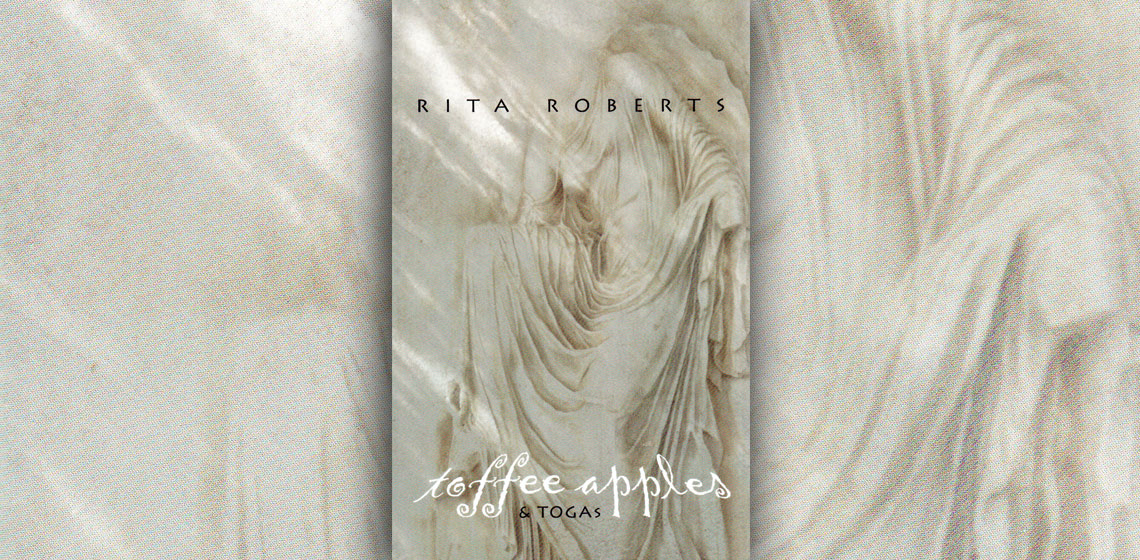
Although Marcus Gavius Apicius was a brilliant observer and author, he was no cook, this is possible to recognise even after 2000 years... Only people truly knowledgeable in cooking, and also those who love to experiment, can cook according to the literary translation of Apicius ( Beranová – Řešátko 2000, 7 and 88, my own translation).
Maybe we can add that also those who are driven by a desire to learn, to know more about the world and of our ancestors. All three apply to Rita Roberts who is, from our current point of view, an unusual archaeologist. Her autobiography Toffee Apples and Togas chronicles her life (not always chronologically, which can be confusing) from her early years in Birmingham before the Second World War to her current life on Crete. While the whole book is worth reading and her insights on living in the ‘back streets of Brum’ are fascinating, we will concentrate on the chapters describing her way into archaeology and sharing her love of ancient times with others.
Rita Roberts started to pursue her interest in archaeology quite late. Following her husband’s serious illness, Rita had to sell her small antique shop and the couple moved from Birmingham to Worcestershire. There she was told that some archaeologists accepted volunteers, so she called the Worcester College where they gave her a contact to a local dig in Droitwitch. She started her carrier by washing and marking pots at Hanbury Street excavations and soon spotted that her knowledge of medieval and later pottery, which she had acquired in the antique trade, was a good first step in learning about Roman and Prehistoric pottery. Rita was soon was able to start sorting pottery sherds on the excavations. From there she worked for the Hereford and Worcester Archaeology Department for twelve years until the family moved to Wales.
After moving to Wales and gaining an A-level in ancient history, Rita was thinking what to do next. She had always thought that history lessons at school were terribly boring. They could be brought to life with the help of items loaned from museums. Such presentations could help pupils to visualise domestic life of the period. She started by meeting with the Friends of the Ludlow Museum in Shropshire. While discussing her idea with the curator and staff she realised that she might not be able to afford to run this project, but luckily the staff of the museum liked her idea and supported her. The museum designer helped her to create a replica of a Roman kitchen and illustration boards, and she started giving talks to children in schools and museums. During one of her talks she decided it would be good to show children which food would have been cooked in which vessel. For this she studied Marcus Apicius’s book on Roman cuisine and chose a recipe for chicken boiled with spices. In preparing a meal, she allowed the children to help with part of the meal. Unfortunately the book does not say where the rest of the meal came from. Was it prepared by Rita? Was it prepared in the school kitchen? And I have another question, why is it, when somebody talks about Roman food, they always have to talk about dormice?
The chicken recipe was a success. A history teacher in the school suggested she should start making and selling the sauce she used in making her Roman Banquets. Rita, tentatively, tried and the first sales went to museums. Eventually, she was invited by The Sealed Knott Society to one of their displays. This lead to her selling her sauces, now not only Roman but also medieval, directly to customers at re-enactment events up until her retirement and move to Crete.
The autobiography is accompanied by several recipes, mostly Roman and mostly for sauces sourced from Apicius and altered for modern use. I have to admit I have not tried them.
Book information:
ROBERTS, Rita, 2011, Toffee Apples and Togas, London: Spiderwize. 186 p, black and white photographs, ISBN: 978-1-908128-01-0

Bibliography
BERANOVÁ, M. and ŘEŠÁTKO, J. ,2000, Jak se jedlo ve starověku: Římská kuchařka, Prague: Libri.